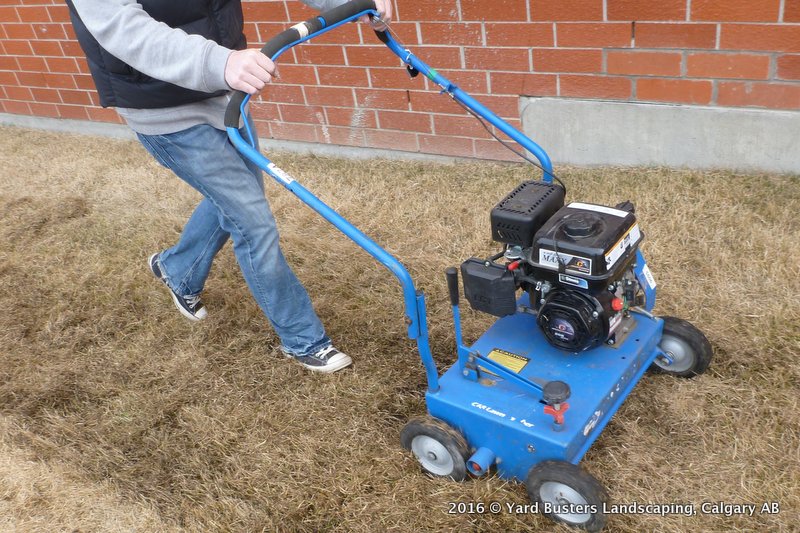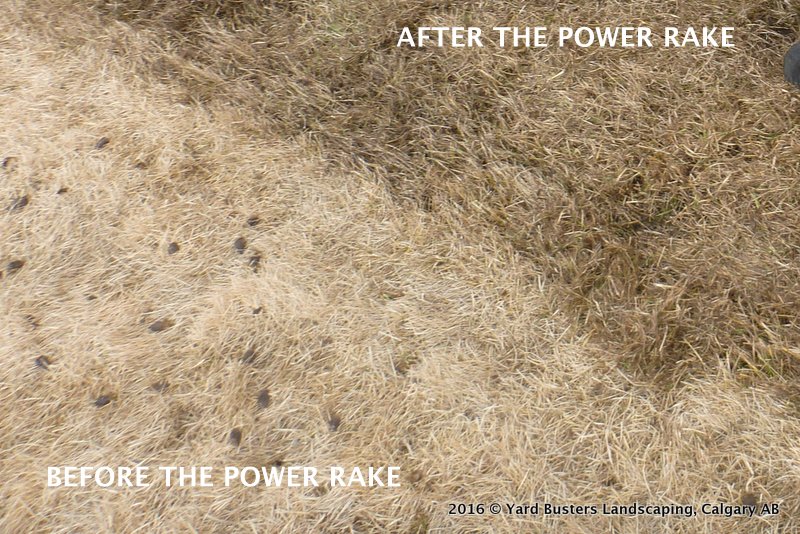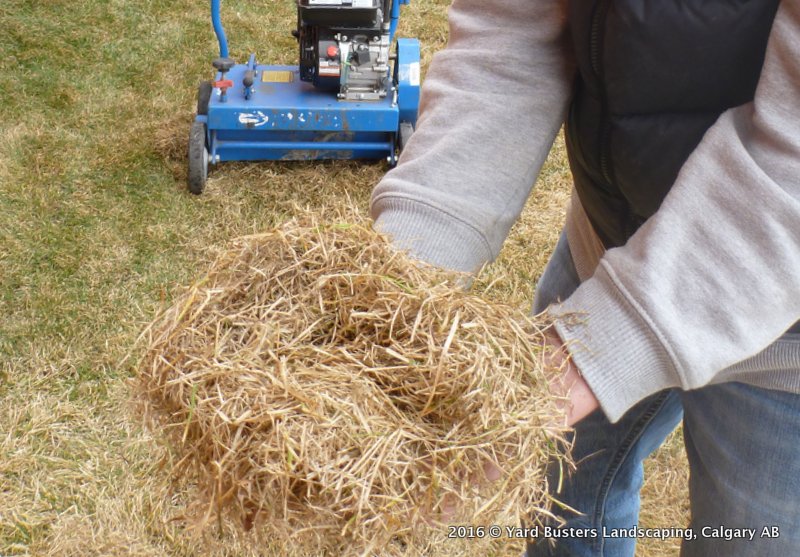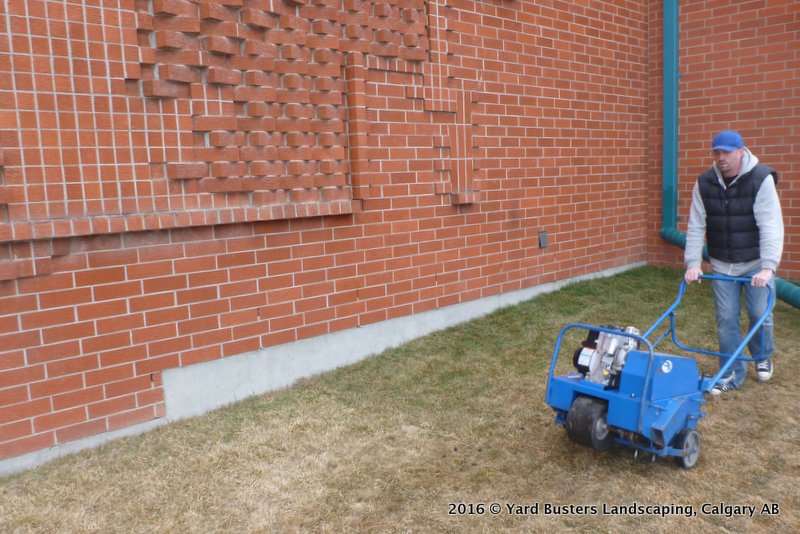Keys Points For a Healthy Lawn
Mechanical power raking is the most efficient way to remove thatch
Excessive lawn thatch prevents water from penetrating below the surface of your lawn
Left on its own the organic thatch material will continue to accumulate
Power Rake your yard either in early spring or late fall
What is it?
Power Raking or Mechanical de-thatching is the process of removing excess organic material from your lawn. This excess material can be both living and dead and accumulates just between the growing grass plant and surface of the soil.
Left on its own the organic material will continue to accumulate. Like a thatched roof water will be unable to penetrate the surface of the thatch. As a building material thatch has helped proliferate human growth but excessive lawn thatch is not good and will be the Trojan horse that destroys your lawn.
Power Raking is different from pulling a rake over your lawn in several ways. A plastic rake only removes surface debris. A thatching rake does a better job but is physically demanding and can cause you injury if your body is not in physical condition. Mechanical power raking is by far the most efficient way to remove thatch by doing the job of 20 thatching rakes in half the time.
Aggressive In Nature
Mechanical de-thatching tines move at a rate of 1800 revolutions per minute, which makes lifting thatch very efficient but can cause injury to grass. A typical mechanical power raking machine is about 22 inches wide. This machine will typically sit level but if there is uneven ground or low spots in your yard the wheels now sit askew. When the machine no longer sits level it will create a sever attack angle, which can scalp a yard. So keep in mind if your yard has high or low spots it will be susceptible to injury.
To decrease stress and the degree of injury to your lawn Power Rake your yard either in early spring or late fall. By planning your yard maintenance you give your lawn time to recover for the active growing season.
What to do if your lawn is injured
If your lawn does become injured do not fret there are a few steps you can take to help make a speedy recovery. First, water the effected spot(s). Second, overseed the affected area with a mix of Kentucky bluegrass and Creeping Red Fescue. You can typically pick up a bag of such seed at your local garden centre. Finally, Top dress damaged areas with potting soil or garden mix; this step creates a mulching area to decrease water loss when you are unable to water the area.
Power Rake alternatives
A plastic rake only removes surface debris. A thatching rake does a better job but is physically demanding and can cause you injury if your body is not in physical condition. Mechanical power raking is by far the most efficient way to remove thatch by doing the job of 20 thatching rakes in half the time.
If you wish to avoid the aggressive nature of the Power rake there are chemical lawn treatments, which contain micro-organisms that will effectively consume thatch. However, these treatments are prohibitively costly… unless your property happens to be a golf course or sports field!




